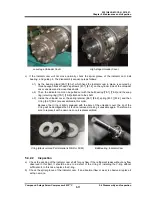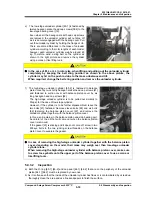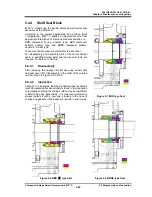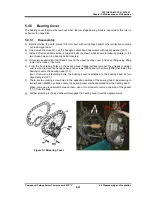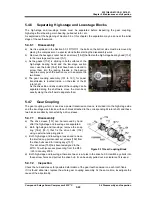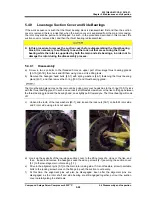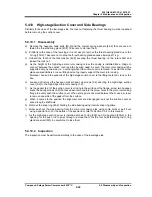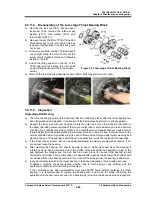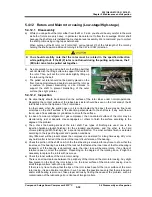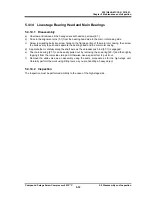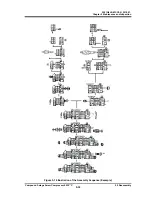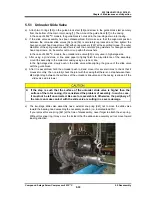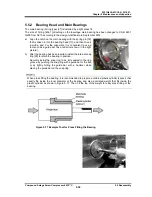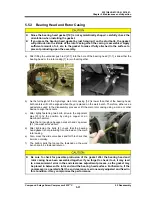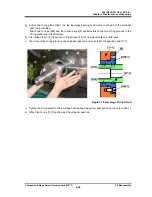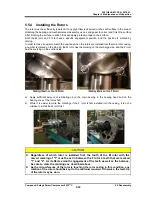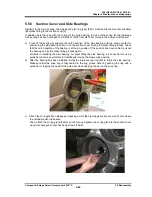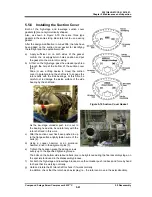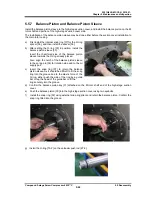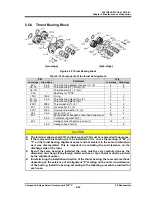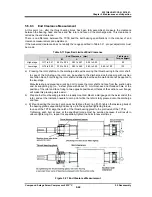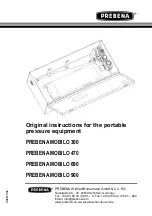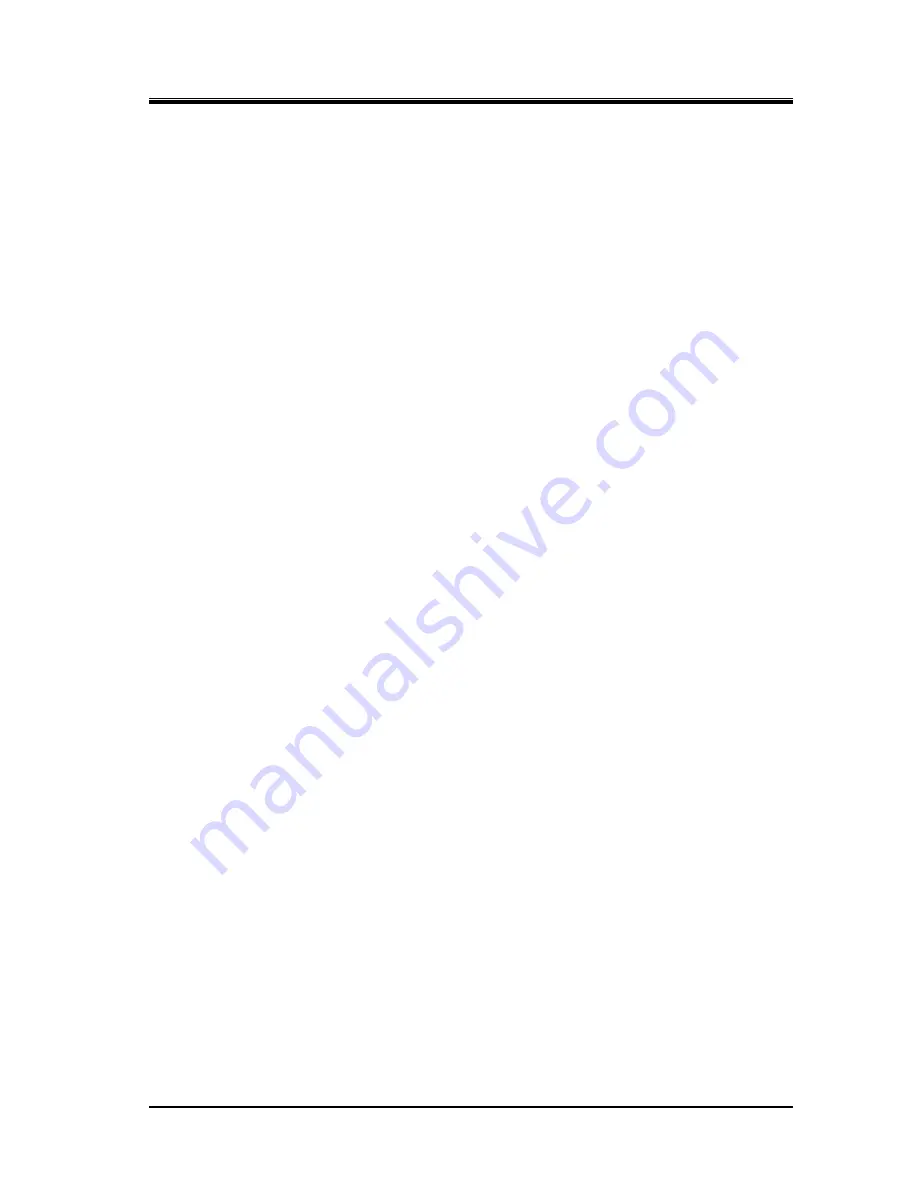
2201Q4JE-MY-C9-N_2018.01.
Chapter 5 Maintenance and Inspection
Compound 2-stage Screw Compressor 4032**C
5.4 Disassembly and Inspection
5-31
5.4.13 High-stage Bearing Head and Main Bearings
On the rotor mounting side of the bearing head [11-2], there is a gas discharge port as determined by
the operating conditions of the compressor. This discharge port affects the performance of the
compressor.
In addition, the bearing head has the main bearing that supports one end of the rotor.
5.4.13.1 Disassembly
a) Remove all the hexagon socket head cap screws [2-2] fastening the main rotor casing and the
bearing head. Support the foot of the main rotor casing using squared timbers.
b) Use jacking bolts to evenly push the bearing head. Once some gap is produced between the main
rotor casing and the bearing head, use a scraper to detach the gasket from the bearing head and
put it on to the main rotor casing side.
When the alignment pins are disengaged, the bearing head is separated from the main rotor
casing.
c) The main bearing [27-2] is lightly press fit into the bearing head. When removing the main bearing,
first use internal snap ring priers to remove the snap ring [29-2]. Then, either use a plastic block or
other suitable element to push the main bearing from the rotor side or use a special tool to pull out
the main bearing. For the details of the special tool, refer to Section 5.5.2 in this manual.
d) The unloader slide valve can be removed as an assembly by pulling it out from the bearing head
side. If no specific abnormality is found, no further disassembly is required.
e) The guide block stem [88-2] is screwed in from the bottom of the main rotor casing, and the guide
block [87-2] is engaged from the top. To replace the O-rings [89-2], remove the guide block stem.
5.4.13.2 Inspection
a) We recommend as well as the side bearings, unconditional exchange of the main bearings on the
occasion of the compressor overhaul, but for confirmation of the compressor condition and system
operating condition, carefully check the sliding part metal surface of the main bearings.
If the metal surface is gray or any foreign matter is buried, also carefully check the wear of the rotor
shaft.
b) Check the condition of the surface of the bearing head on the rotor side, where the discharge port is.
Properly mend the surface if any flaw is observed. If the entire surface has significant flaws, either
the thrust bearing is defective or the end clearance adjustment is poor.
If oil compression has been caused during the operation, carefully and thoroughly check the area of
the discharge port in particular. If the continued use is in doubt at all, perform the penetrant testing
to determine if it can be used or not.
c) With the unloader slide valve mounted in position, check the step height between the slide valve
and the main rotor casing surfaces.
Usually, the surface of the slide valve should be lower than the surface of the main rotor casing. If
the top surface of the slide valve has a trace of hitting the rotor, the probable cause is that the slide
valve is worn or the rotor shaft/bearing is worn. In this case, please contact our sales offices or
service centers.
d) Check the properness of the guide pin [68-2] at the tip of the unloader push rod [67-2] that engages
with the indicator cam [77-2].

